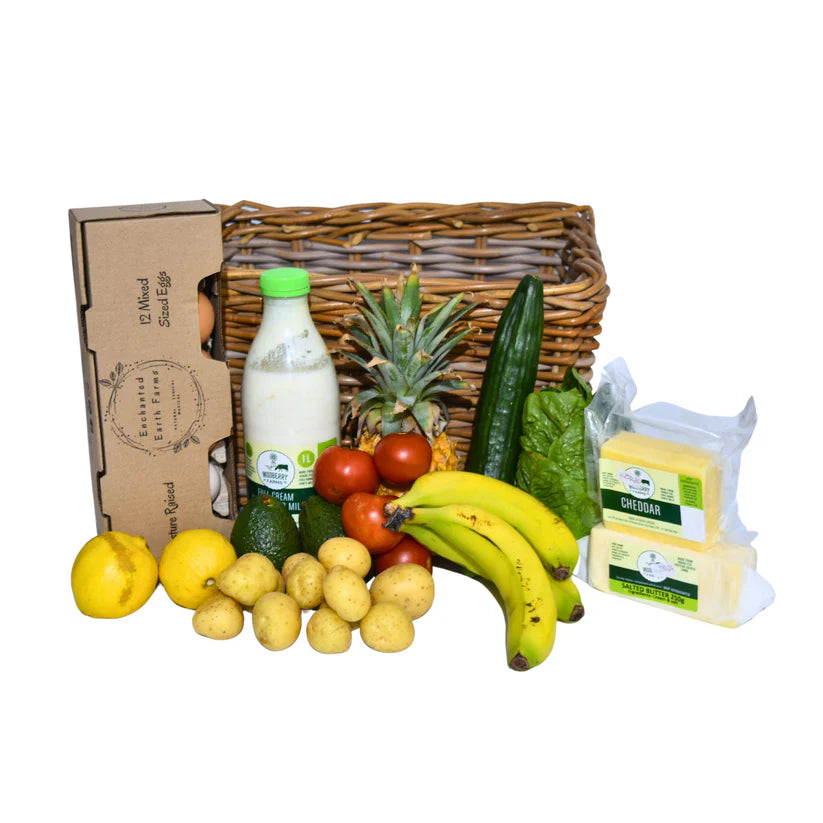Article Summary:
-
A ripe mango emits a sweet, fruity aroma, especially near the stem. It should also yield slightly to gentle pressure when squeezed, indicating that it's ready to eat. If it's too firm, it's unripe, and if it's too soft, it's overripe.
-
While color can vary by variety, ripe mangoes often display vibrant colors and may develop slight wrinkles. However, color alone is not a reliable indicator of ripeness, as some varieties remain green even when ripe.
-
To store ripe mangoes, keep them at room temperature for optimal flavor and texture. For longer storage, refrigerate them. If you purchase unripe mangoes, you can ripen them at home by placing them in a paper bag at room temperature
Mangoes are one of the world's most beloved fruits, renowned for their sweet flavor and vibrant colors. However, determining when a mango is ripe can be a challenge, as the ripening process varies depending on the variety and environmental conditions. Unlike some fruits that change color dramatically as they ripen, mangoes often retain their green skin even when ripe, making visual cues less reliable. To ensure you enjoy your mango at its best, it's essential to understand the various signs of ripeness, from subtle changes in color and texture to the fruit's aroma and weight. In this article, we will explore how to identify a ripe mango, helping you make the most of this delicious and nutritious fruit.
Understanding mango ripening stages
Understanding mango ripening stages is crucial for enjoying this fruit at its best. Mangoes are typically harvested when mature but not yet ripe, allowing them to continue ripening after being picked. The distinction between maturity and ripeness is important: maturity refers to the stage at which a mango can ripen, while ripeness is the stage at which it is ready to eat. Immature mangoes will not ripen properly and will have poor flavor and texture.
The ripening process of mangoes can be divided into several stages, each characterized by changes in texture, color, and sweetness. Initially, green mangoes are firm and tart, similar to a crisp cucumber. They are often used in salads or pickled. As they ripen, they become sweeter and softer, eventually reaching the stage where they are ideal for eating fresh or using in desserts. This stage is typically when the mango is slightly soft to the touch and has a sweet aroma.
Mangoes are climacteric fruits, meaning they continue to ripen after harvesting. To accelerate ripening, store them in a paper bag or with other fruits like bananas or apples, which release ethylene gas—a natural ripening agent. Once ripe, mangoes can be stored in the refrigerator to slow down further ripening. This allows you to enjoy them over a longer period while maintaining their optimal flavor and texture.
Understanding these ripening stages and how to manage them can help you enjoy mangoes at their best. By recognizing the signs of ripeness and using techniques to control the ripening process, you can ensure that your mangoes are always ready to eat when you want them. Whether you prefer them green for savory dishes or ripe for sweet treats, knowing how to handle mangoes will enhance your culinary experience with this versatile fruit.
Visual signs of ripeness
Visual signs are essential for determining the ripeness of a mango, as they provide key indicators that help you assess whether the fruit is ready to eat. One of the most noticeable visual cues is the color of the mango's skin. While ripe mangoes generally exhibit vibrant colors, it's important to note that different varieties may display varying hues. For example, some mangoes may turn from green to yellow or orange, while others might retain some green even when ripe. Therefore, relying solely on color can be misleading; it's best to consider it alongside other indicators.
Another visual sign to look for is the texture of the skin. As a mango ripens, its skin may develop slight wrinkles and become less shiny. A ripe mango will also feel slightly softer when gently squeezed, indicating that the flesh inside has softened. If the mango appears too firm and smooth, it is likely still unripe. Additionally, a well-developed stem that protrudes outward can indicate juicy flesh beneath the skin, suggesting that the mango is fully ripe.
It's also helpful to observe any changes in the overall appearance of the fruit. Ripe mangoes should have a consistent color without dark spots or blemishes. If you notice any black spots or areas that seem to be rotting, it's best to avoid those fruits as they may be overripe or spoiled. Conversely, a ripe mango will emit a sweet aroma, which can be another indicator of its readiness for consumption.
In summary, assessing the visual signs of ripeness in mangoes involves examining their color, texture, and overall appearance. By combining these observations with gentle pressure and aroma checks, you can confidently determine when a mango is at its peak ripeness and ready to be enjoyed.
Sensory checks
Sensory checks are essential for determining the ripeness of a mango, as they provide immediate feedback on the fruit's condition. One of the most reliable sensory methods is the smell test. Ripe mangoes emit a characteristic tropical, sweet aroma, which is more pronounced near the stem. This scent is due to the presence of esters, organic compounds that enhance the fruit's flavor and aroma. If the mango lacks this fragrance, it may not be fully ripe yet.
Another important sensory check is the touch test. A ripe mango is slightly soft to the touch but still firm enough to resist pressure. It should have a slight give when pressed gently, indicating that the flesh inside has softened. Avoid mangoes with squishy spots, as they are likely overripe. The texture of the skin can also provide clues; ripe mangoes may develop slight wrinkles and become less shiny.
In addition to smell and touch, sight can also be used to assess ripeness, although it is less reliable. While the skin color can vary by variety, ripe mangoes often develop a deeper, more vibrant color. For example, some varieties turn from green to yellow or orange, while others retain some green even when ripe. However, it's important to note that skin color alone is not always a reliable indicator of ripeness, especially since some varieties may remain green even when fully ripe. Combining these sensory checks helps ensure that you choose a ripe and delicious mango.
The role of squeeze and weight in determining ripeness
The role of squeeze and weight in determining mango ripeness is crucial, as these methods provide tangible indicators of the fruit's readiness to eat. One of the most reliable methods for assessing ripeness is the squeeze test. A ripe mango should yield to gentle pressure, giving slightly when squeezed. This subtle give is a key indicator that the flesh inside has softened and the mango is ready to be enjoyed.
If a mango is too firm, it's likely unripe, while a mango that's too soft may be overripe. The squeeze test is similar to checking the ripeness of avocados, where a slight give indicates readiness. It's important to apply gentle pressure, as excessive force can damage the fruit. By using this method, you can avoid purchasing mangoes that are not yet ripe or have passed their prime.
In addition to the squeeze test, the weight of a mango can also provide clues about its ripeness. Generally, ripe mangoes feel heavy for their size due to their high water content. However, weight alone is not a definitive indicator, as it can vary significantly between different mango varieties. Some varieties naturally have a higher water content, making them heavier even when unripe. Therefore, relying solely on weight can lead to inaccurate assessments.
For a more accurate assessment, it's best to combine the squeeze test with other sensory checks, such as smell and visual inspection. A ripe mango typically emits a sweet aroma and may display a more vibrant color, although color alone is not a reliable indicator of ripeness. By using these methods together, you can confidently determine if a mango is ripe and ready to enjoy. This comprehensive approach ensures that you select the best mangoes for your needs, whether you're looking for a sweet snack or a flavorful addition to your recipes.
Tips for buying and storing ripe mangoes
When buying ripe mangoes, it's essential to use a combination of sensory checks to ensure you're selecting the best fruit. One of the most reliable indicators is the smell. Ripe mangoes emit a sweet, fruity aroma, especially near the stem end. This is a strong indicator of ripeness and quality. Additionally, perform a gentle squeeze test; a ripe mango should yield slightly to pressure but not be too soft. Avoid squeezing too hard to prevent bruising.
During the visual inspection, look for vibrant colors and slight wrinkles on the skin. While color can vary by variety, a ripe mango typically displays a more vibrant hue. Avoid mangoes with black spots or excessive wrinkles, as these can indicate spoilage. Another factor to consider is weight; ripe mangoes tend to feel heavy for their size due to their high water content. By combining these methods, you can confidently select ripe mangoes.
Once you've purchased ripe mangoes, proper storage is crucial to maintain their quality. For optimal flavor and texture, store ripe mangoes at room temperature. Refrigeration can slow down ripening but may affect flavor and texture. However, if you want to extend the shelf life of your mangoes, storing them in the refrigerator is a good option. This can keep them fresh for a few more days.
Finally, it's important to regularly check your mangoes for signs of overripeness, such as soft spots or a strong, unpleasant odor. Use them promptly or discard them if they become overripe. Additionally, familiarize yourself with different mango varieties, as each has unique characteristics that can affect how you judge ripeness. If you purchase unripe mangoes, you can place them in a paper bag at room temperature to accelerate ripening, checking them daily to avoid overripening.










